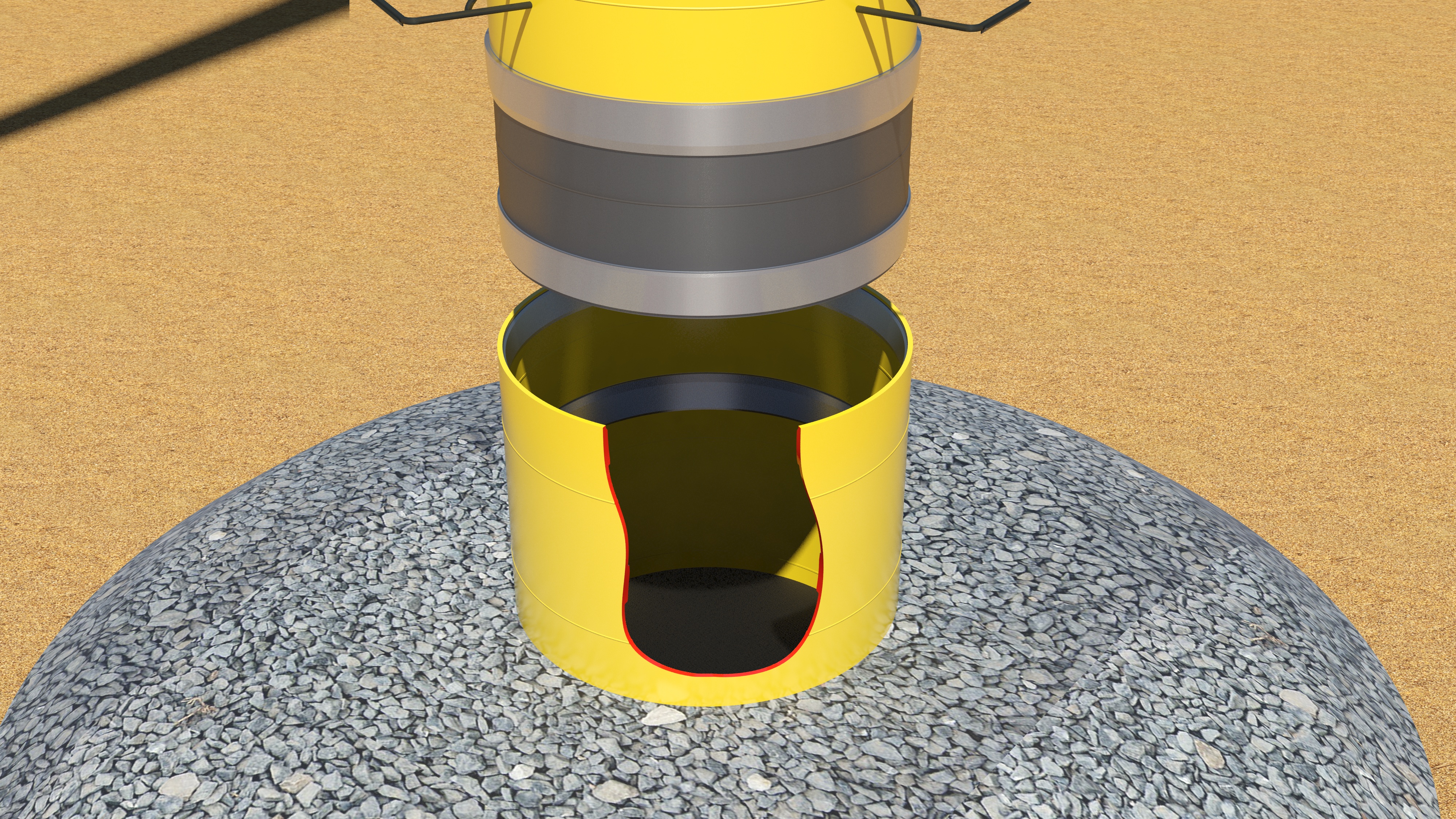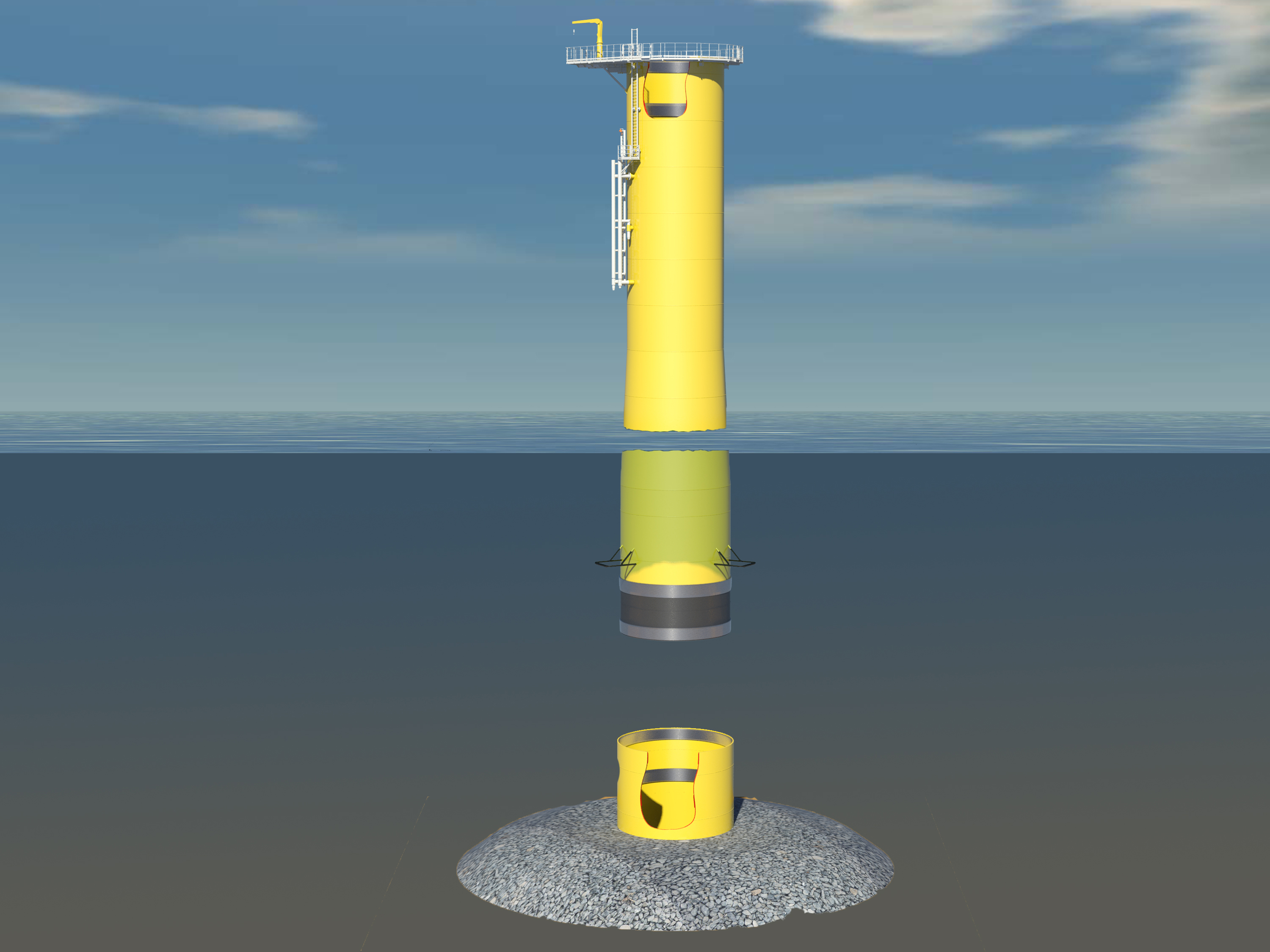Making connections in offshore wind market

In the relatively young and competitive market of offshore wind, cost reduction and innovation are key considerations. As such, pioneering designs and improvements to existing technology can be found in every new wind farm scheme.
With the connection between a wind turbine and the top of its foundations forming a crucial primary component, KCI’s recent research and development has brought this into focus. During a Delft University of Technology (TUD) graduation project executed at KCI in 2014, we researched existing connection types such as bolted flanges and grouted connections.
In addition, a conical ‘slip joint’ connection used for small onshore turbines was considered. This connection had been previously proposed by the Dutch Offshore Wind Energy Converter (DOWEC) project in 2003. It was also part of a PhD research programme at the TUD at the same time as our graduation project in 2014.

Inspiring innovation
We found that each connection had its own setbacks. For example, using grout is complex from a logistic point of view and expensive equipment is required on board installation vessels, as it can only be produced shortly before use. Grout curing also takes a considerable amount of time, and during this period, it is sensitive to temperature and mechanical loads.
Other conventional connection methods, such as the installation and maintenance of bolts, are labour intensive. This leads to higher costs being involved, as well as health and safety issues which require additional measures to be taken.
In addition, investigations into the onshore slip joint showed that it did not meet the required offshore standards with regards to corrosion and fatigue. Moreover, the fabrication of the large cones required by this method would be expensive.
Nevertheless, it did inspire a new innovation that we termed the Double Slip Joint (DSJ). The concept is based on two sets of relatively small conical rings which fit into each other. While we expected the system would automatically settle and instantly form a stable fixed connection with a robust seal at the top and bottom rings, this was not immediately self-evident.
However, the student successfully proved that this simple DSJ concept would indeed behave this way under the weight of the turbine and varying environmental loads. This was done by using advanced finite element method (FEM) simulations.

Scaling up investigations
This led to two further TUD graduation projects in 2015/16, in which the DSJ was tested in small scale experiments (at a diameter of 0.2m). In 2017, investigations on a larger scale (1.6m diameter) were executed by the test institute WMC. These were supported by TKI Wind op Zee and a consortium of KCI, SIF and Van Oord.
The tests showed that the mechanical behaviour of the connection can be accurately scaled and also simulated numerically. This conclusion was not only useful for the designers, but it was also an important step in proving the validity of scaling up the DSJ concept for actual offshore foundations (6-10m diameters).
Fabrication and installation aspects have been explored with SIF and Van Oord. The test results and a finalised DSJ design have been reviewed by DNV-GL. Consequently, a verification letter has been received stating the high potential of the DSJ as an alternative connection for offshore wind turbine foundations.
As the size of the turbines and support structures are expected to double in the coming years, the market must meet major challenges surrounding the handling of extremely large and heavy parts offshore. The current capacity of crane lifts on board installation vessels will soon be insufficient to lift these.
However, a unique feature of the DSJ is that it can be applied under the water. This allows for a reduction in the length and weight of the monopiles, and results in an extension of the operability range of installation vessels.
At KCI, we are planning a full-scale demonstration of the DSJ in a large offshore turbine, as the last step in bringing it to the market. In our view, the sooner, the better, as developers are spending a large amount of time and money building offshore windfarms with inefficient and expensive connection methods.
Before long, a new under water connection will also be required to enable building very large future turbines.
Written by
Boudewijn van Gelder
Manager Research & Development, KCI The Engineers

Contact a consultant
Get to know more about the innovations available for your operations.